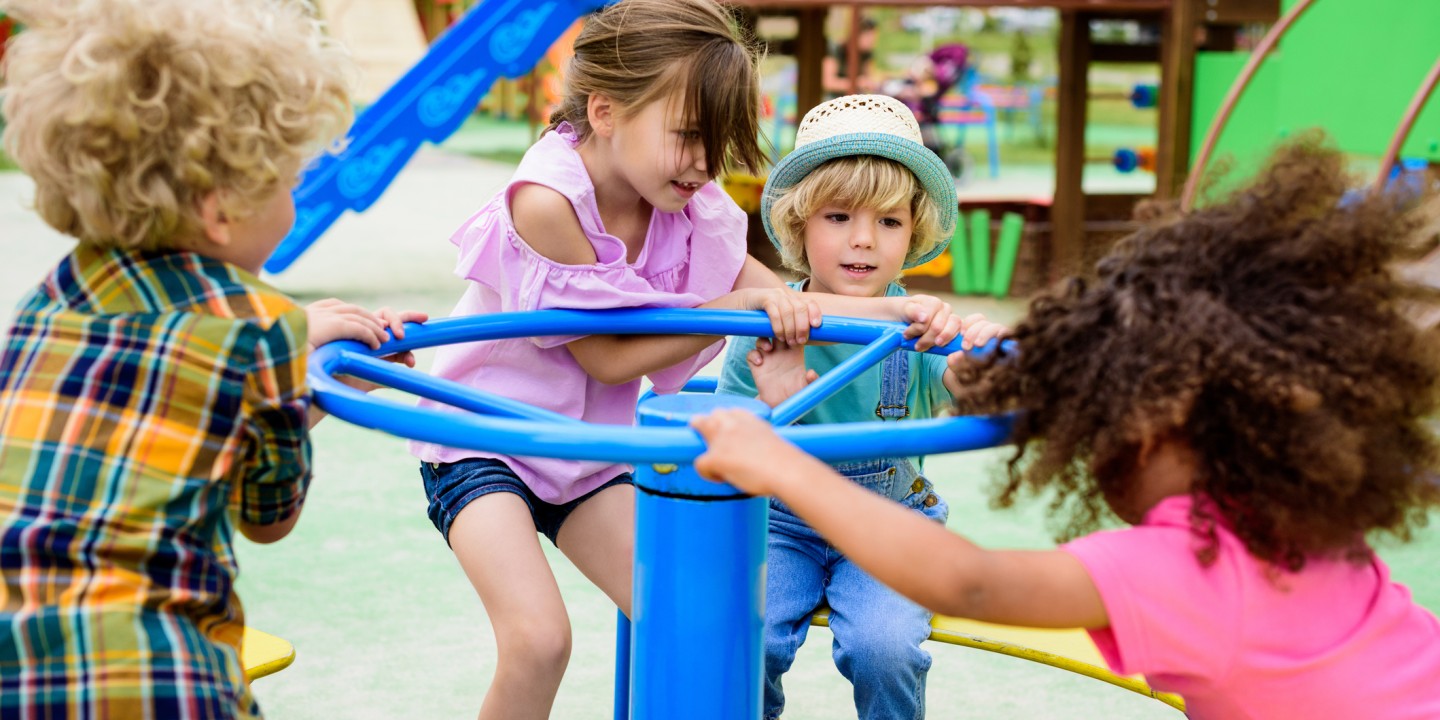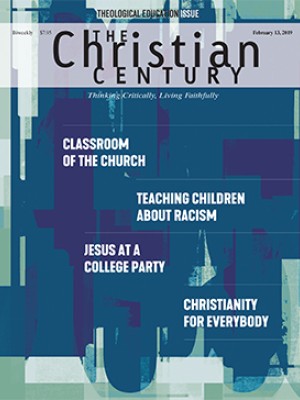Teaching children about racism
Anyone who cries “it’s not fair!” is old enough to learn about racial inequality.

Can children be racists? The answer depends on how we define racism. When I witness a four-year-old shouting racial slurs and taunts on a playground, I attribute his behavior to what he has heard in his home. Preschoolers, grade schoolers, and even high schoolers are rarely willfully malicious; they are still growing and making mistakes. We give grace to young people in their errors.
But according to critical race theory, racism isn’t color-consciousness, nor is it a personal prejudice against people of color. Drew Hart describes it as “a radicalized systemic and structural system that organizes” the society. When we use the term systemic racism, we are referring to the way an entire society is structured to benefit the dominant cultural group at the expense of another. Looking beyond individual and personal interactions, we observe the larger patterns at work in a racialized society.
Read our latest issue or browse back issues.
Therefore any children born with white skin into white families participate in a system that affords them opportunities at the expense of people of color. Scholars argue that children can develop implicit biases against people of different skin color without being explicitly taught to do so. Young children’s immature cognitive capabilities predispose them to categorize others in stereotypical fashion. Children also pick up on social and environmental factors. When their parents live self-segregated lives—in which their communities, networks, bookshelves, and music collections all represent a single racial category—children will assume (without ever having been taught) that people of a different skin color are to be avoided or feared.
Parents often marvel at how fast children soak up their environment, particularly in the first few years of critical learning and development. Because the air we breathe has been systematically constructed to produce a racial hierarchy in which white superiority reigns, kids pick it up remarkably quickly and thoroughly. Social psychologist Mahzarin Banaji has found that children as young as three years old who are exposed to racism tend to embrace it in a matter of days. And those children who are recipients of racist acts and attitudes? They just as quickly internalize their own inferior status in society before they even learn the vocabulary for it.
Helping children develop a positive racial identity and providing them with antiracism tools begins with honest conversation. Research shows that most parents, regardless of color, are reluctant to have conversations about race with their children. However, parents of color generally find it more important to talk about race with their kids than white parents do. Some white parents believe that addressing antiracism with their children is a matter of choice—after all, white children aren’t at risk of being the target of racism.
But the reality is that racism harms everybody. When white children implicitly learn from their environment to fear and reject people of different colors and then are taught to not express that fear and rejection, they are forced to live hypocritically. They lose the ability to live alongside people of color without anxiety, guilt, and fear. Abraham F. Citron, author of Rightness of Whiteness: The World of the White Child in a Segregated Society, says this about the white child:
White-centeredness is not the reality of his world, but he is under the illusion that it is. It is thus impossible for him to deal accurately or adequately with the universe of human and social relationships. . . . Children who develop in this way are robbed of opportunities for emotional and intellectual growth, stunted in the basic development of the self, so that they cannot experience or accept humanity.
White children participate in a racially unjust society and therefore experience racial tension and division. Yet because of the ideology of color-blindness, they have not been raised to talk about these experiences. White kids know they aren’t allowed to be proud to be white, but they aren’t sure why. Without a healthy racial identity and lacking tools of anti-racism, white kids risk missing out on the beautiful richness of meaningful multiracial relationships. They also risk growing into entrenched bitterness and self-hatred, which may lead them to perpetrate racist attitudes and acts.
White parents play a critical role in dismantling racism in their own families. This is not only the morally just thing to do but helps provide white children with a healthy self-identity, one capable of navigating social relationships in a complex, multiethnic world.
“Racism gains power from the silence that surrounds it,” writes Sharon Chang in her book Raising Mixed Race. She interviewed 68 parents of multiracial children and reports that half of them believed their children were too young to talk about race. Some believed you can’t have a complex conversation about race with preliterate children, and others thought bringing attention to race corrupts the innocent child. Yet without intentional antiracist guidance from parents, children are observing, listening, searching for racial or ethnic in-groups to belong to, making value judgments along racial lines, and internalizing racism without an outlet to process it or combat it.
The primary reason parents struggle to talk with our children about racism is that we don’t know how to talk about it ourselves. Racism is invisible, nuanced, its ugliness usually hidden behind the curtain of faux equality. It’s tempting to put off the conversation for another day. Each day that passes, however, our children are internalizing the racist structure, whether or not they are directly targeted by racist acts.
It’s common these days for parents to teach their preverbal babies sign language. The reason for this (besides the fact that it is adorable to see babies’ chubby little hands bump against each other as they gesture) is that it lessens their frustration of not being able to communicate their needs. It is a powerful tool to be given the gift of language. In a similar way, giving young children a language to process racism empowers them. It allows them to address their observations, validates their feelings, and helps them move into a position to combat racism.
Racism is a deeply rooted injustice based on racial hierarchy. Simply put, society isn’t fair. If you’ve spent any time in situations involving children and sweets (or presents), you’ll know that children have a keen sense of fairness. Long before they have words, they feel injustice deep in their bones. From the first time you see your child narrow his eyes and furrow his brow in reaction to his sister getting the larger piece of cake, your child is ready to address racial inequality.
Earlier I wondered if the four-year-old on the playground shouting racial slurs is racist. The answer is complex. What we know is that a four-year-old is at a critical formation period of learning and development. This is a time for parents and those in the community to begin gently correcting a child’s language. The goal is not to achieve respectability, to awkwardly brush a comment aside with, “Don’t say that. That’s not nice.” The aim, rather, is to teach the child that such language is based on an unjust racial hierarchy. “We don’t say this word because this is what people have said in order to treat people unfairly.” Get straight to the heart of the issue—that the injustice of racism harms human bodies in real and oppressive ways.
Many young children experience racism directed against them. They are particularly vulnerable when they don’t have the language to express their hurt. Parents have the opportunity to be vigilant in observing racial attitudes that may be subtly chipping away at their child’s identity. It’s important to call out the racism and to assure the child that what was done to him wasn’t right and was not his fault. Parents can help the child engage in the struggle against racism by making what he is invisibly internalizing visible with language.
For example, children who read books that are predominantly made up of white characters internalize that experience. In 2014, only 5 percent of published children’s books contained black characters. Christopher Myers calls it “the apartheid of children’s literature.” Our children may not notice it, but we can call it out, saying, “Isn’t it sad that none of the books that we read have characters who are black?” or “You know your buddy Jerome from school? How come none of the picture books have characters that look like him?”
Furthermore, some children’s books have subtle or blatant racist images and tropes. There has even been debate over whether the beloved Cat in the Hat is caricatured as a blackface minstrel. It’s important that parents not only stock their home bookshelves with diverse authors and characters but help their children develop racial literacy. Organizations like Embrace Race and Teaching for Change offer resources.
I believe many parents don’t engage in these conversations because they fear their children may become pessimistic or hopeless. We want to shelter our children from the harm of oppressive systems. We want the world to be beautiful. We must remember, however, that the truest beauty arises out of struggle. By avoiding the struggle, we are doing our children an injustice—robbing them of the opportunity to work intentionally against the realities of an unjust society.
At 11 years old, Marley Dias told her mother she was “meh” about reading books whose characters are white boys with dogs. She needed to see herself reflected in the pages of her beloved stories. “I couldn’t connect with the characters, so I didn’t get anything out of the stories,” she lamented. In November 2015, she initiated a campaign to collect children’s books that featured black girls as main characters. She planned to travel and donate the books to other children.
In reading about Marley and watching her appearance on The Ellen DeGeneres Show, I found out that Marley is race-conscious and has been from a very young age. She intuited how the representation of people of color in the media, or the lack thereof, is one of the ways systemic racism rears its ugly head. It erases the identity of people of color, offers no positive role models, and inhibits learning and education.
I learned also that Marley understands that it doesn’t have to be this way. Racism is not inevitable. Instead of being a passive recipient of racism, Marley engages with her community to struggle against it.
Kenneth Braswell, father of a six-year-old, wrote a picture book titled Daddy, There’s a Noise Outside to explain in an age-appropriate way the Baltimore protests going on in the wake of Freddie Gray’s death. He says, “Our children deserve to understand the society in which they live. At young ages, they develop a framework of their community based on how their community impacts them.” Developing a healthy racial identity necessarily involves propelling our children into social action. It’s a natural response to injustice. Better yet, we can model it by engaging in antiracism social activism ourselves.
We need to tell children the stories of how their predecessors inflicted or endured racism. We need to help them celebrate their racial heritage. White children need to learn about heroes who stood up against racism. Children of color need to hear stories about the resilience of their people. Every child loves a superhero. Children need heroes who reflect their DNA and who will help carry them and those around them to liberation.
A version of this article appears in the print edition under the title “Teaching children about racism.” It was excerpted from Parenting Forward: How to Raise Children with Justice, Mercy, and Kindness, forthcoming from Eerdmans. Used with permission.





